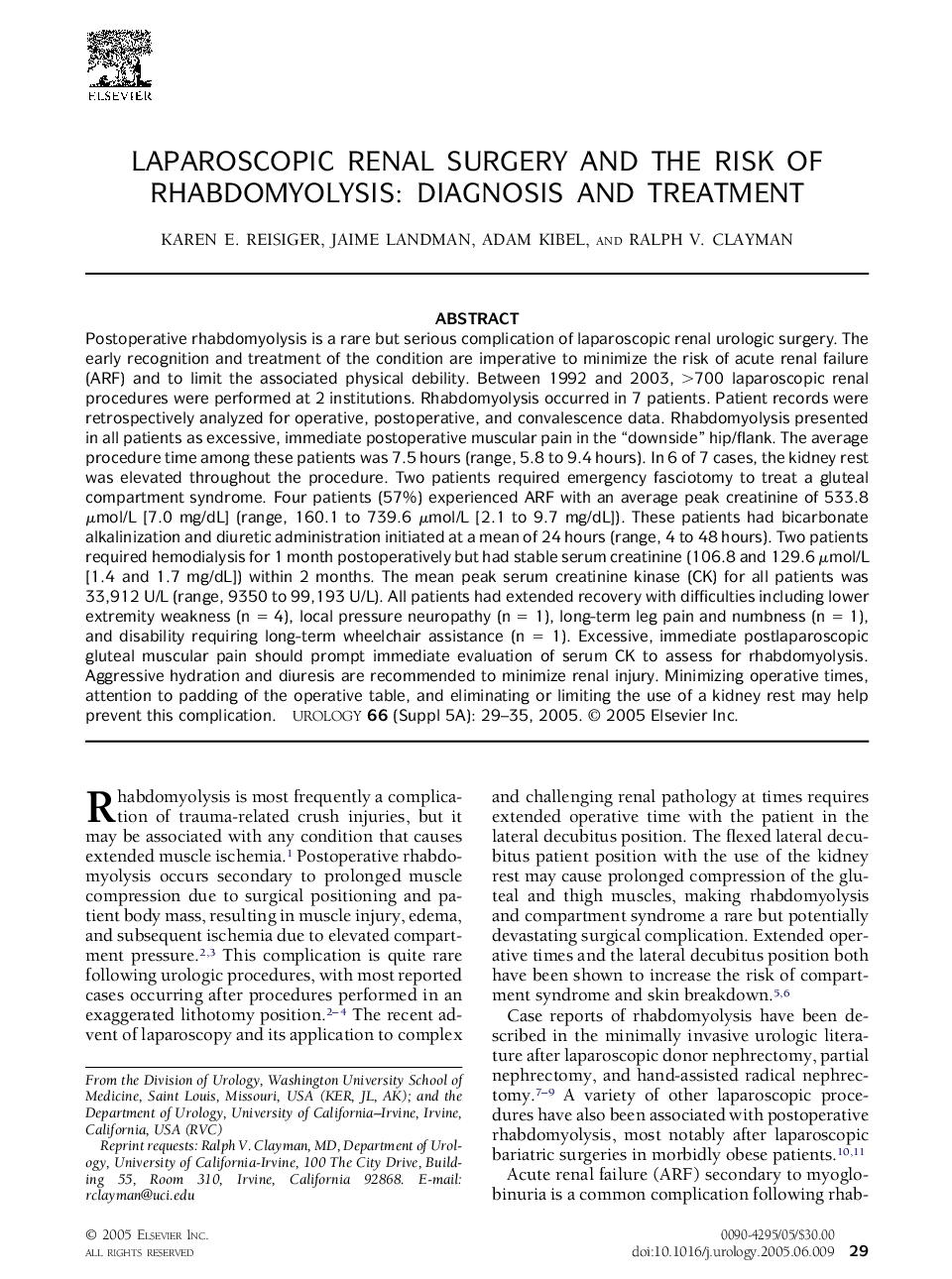| کد مقاله | کد نشریه | سال انتشار | مقاله انگلیسی | نسخه تمام متن |
|---|---|---|---|---|
| 9312949 | 1250465 | 2005 | 7 صفحه PDF | دانلود رایگان |
عنوان انگلیسی مقاله ISI
Laparoscopic renal surgery and the risk of rhabdomyolysis: Diagnosis and treatment
دانلود مقاله + سفارش ترجمه
دانلود مقاله ISI انگلیسی
رایگان برای ایرانیان
موضوعات مرتبط
علوم پزشکی و سلامت
پزشکی و دندانپزشکی
بیماریهای کلیوی
پیش نمایش صفحه اول مقاله

چکیده انگلیسی
Postoperative rhabdomyolysis is a rare but serious complication of laparoscopic renal urologic surgery. The early recognition and treatment of the condition are imperative to minimize the risk of acute renal failure (ARF) and to limit the associated physical debility. Between 1992 and 2003, >700 laparoscopic renal procedures were performed at 2 institutions. Rhabdomyolysis occurred in 7 patients. Patient records were retrospectively analyzed for operative, postoperative, and convalescence data. Rhabdomyolysis presented in all patients as excessive, immediate postoperative muscular pain in the “downside” hip/flank. The average procedure time among these patients was 7.5 hours (range, 5.8 to 9.4 hours). In 6 of 7 cases, the kidney rest was elevated throughout the procedure. Two patients required emergency fasciotomy to treat a gluteal compartment syndrome. Four patients (57%) experienced ARF with an average peak creatinine of 533.8 μmol/L [7.0 mg/dL] (range, 160.1 to 739.6 μmol/L [2.1 to 9.7 mg/dL]). These patients had bicarbonate alkalinization and diuretic administration initiated at a mean of 24 hours (range, 4 to 48 hours). Two patients required hemodialysis for 1 month postoperatively but had stable serum creatinine (106.8 and 129.6 μmol/L [1.4 and 1.7 mg/dL]) within 2 months. The mean peak serum creatinine kinase (CK) for all patients was 33,912 U/L (range, 9350 to 99,193 U/L). All patients had extended recovery with difficulties including lower extremity weakness (n = 4), local pressure neuropathy (n = 1), long-term leg pain and numbness (n = 1), and disability requiring long-term wheelchair assistance (n = 1). Excessive, immediate postlaparoscopic gluteal muscular pain should prompt immediate evaluation of serum CK to assess for rhabdomyolysis. Aggressive hydration and diuresis are recommended to minimize renal injury. Minimizing operative times, attention to padding of the operative table, and eliminating or limiting the use of a kidney rest may help prevent this complication.
ناشر
Database: Elsevier - ScienceDirect (ساینس دایرکت)
Journal: Urology - Volume 66, Issue 5, Supplement, November 2005, Pages 29-35
Journal: Urology - Volume 66, Issue 5, Supplement, November 2005, Pages 29-35
نویسندگان
Karen E. Reisiger, Jaime Landman, Adam Kibel, Ralph V. Clayman,